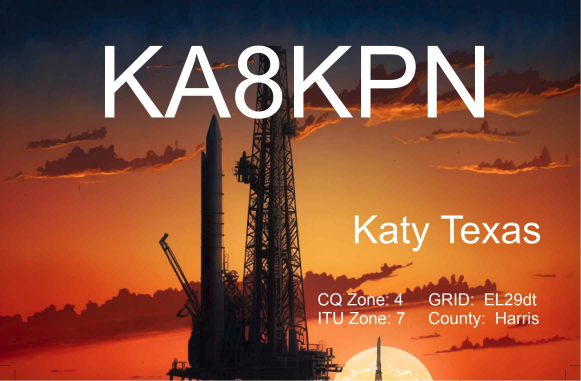A while back, I complained that I had misplaced my second copy of the Jerry Sevick's The Short Vertical Antenna and Ground Radial What I was trying to do was simulate one of the antennas that he had put in the book to see if I was getting a handle on NEC2. As an aside, I don't use EzNEC because I usually run Linux at home, not Windows, and EzNEC is pretty seriously a windows-only thing. I suppose I could get it to run under WINE, but I'm not really very interested in paying money for a product that could be rather difficult for me to use. I figured that I'd only have to climb the NEC learning curve once, and that much of what I was learning was applicable to all of the different flavors of NEC. So, I adopted nec2c, which is a translation of NEC2 into double-precision C code for my tests. I digress.
So, where was I? Oh yes, the book. My ultimate goal is to get an improved antenna such that I can actually make contacts with my Ft Tuthill 80, and I thought that the information contained in Dr. Sevick's book would be a good starting point. Of course, since I am not going to build an antenna just to hope that it works, I wanted to simulate it first. I was getting results I thought were good, so I was looking for the book to compare the results of my simulation with W2FMI's actual measurements.
Along the way, I changed my goal. You see the March 2013 issue of QST has an article on an antenna that covers all of 80 meters, edge to edge. The Ft Tuthill 80 is CW only and wants to operate between 3500-3550 KHz or so, but my wife (who is also licensed) doesn't do CW at all and when my FT-102 gets back from being repaired and Malcomized, I will likely have need to operate on a space rather wider than the 50 KHz or so one of those shortened, loaded antennas can give. It has to be a small antenna because my yard is about 1/6 acre and the HOA CC&R's say that I can have an antenna that isn't taller than 15 feet. (I believe that is 15 feet above the roof ridgeline. This turns out to be important.)
So, I started looking to see if i could apply the techniques from the article to a shortened antenna. The article uses an overcoupled parallel radiator to increase the bandwidth of a dipole antenna. I don't know what that means, exactly, but I was able to simulate that antenna easily enough and get the same results that Ted Armstrong WA6RNC got when he simulated it. The trouble was, when I tried loading the antenna, I didn't get a broadband antenna, at least according to nec2c. I first tried linear loading, with the radiator and the resonator stacked on top of each other, and then side-by-side. No dice. Then, I tried loading coils with no better luck.
Then, I hit upon an idea: A helical antenna. I had read articles on winding a half-wavelength of wire into a helix and feeding it in the center like a dipole. The idea is that the antenna is not loaded by the helix, but that the helix shortened the overall length of the antenna without shortening it's electrical length, or some mumbo-jumbo like that. I haven't read a principles of operation for that antenna that makes sense, but I thought I could simulate it and see. what works. Now, the radiator and the resonator need to be separated by a gap and that's simply not possible if your wires are turn in a coil around a 1-inch piece of PVC or similar. What I eventually wound up with was a helix of two turns 7 meters high and 3.2 meters in diameter, and a slightly shorter resonator wound inside it.
One area of uncertainty is the number and sizes of the segments. The usual rules say that interacting elements need to use segments that are all of the same size and that they all must align. With the antenna arranged as two nested helices, I can do at most one of those. I've simulated it several times with different segment sizes, some with a consistent number per turn (aligned segments) and some with a consistent segment length. I get similar, but slightly different, results with the different techniques.
I interpret this as a limitation of the simulation. When the simulation won't give you guidance, it's time to build something and see what numbers the real world gives you. I'm also getting results that indicate that the antenna has a loss of 15 dB in the direction of maximum signal. So, I thought the thing to do is build a scale model that I can compare with a vertical dipole or monopole and see what a field strength meter says. I was able to scale the antenna to cover all of the 10 and 12 meter bands and the simulations of that antenna give me similar results to the larger antenna, in terms of bandwidth and feedpoint impedance, oh and it also shows a 15 dB loss.
So, my way forward is clear. I'll be building the 10-12m antenna and borrowing a FSM from somebody. Compare the results and we'll see.
Oh, and along the way I discovered that I was simulating Jerry Sevick's antennas wrong. I updated the simulation and this morning I found my copy of the book, so I was able to confirm that the simulation matches the actual antenna pretty well. I was hampered by the fact that I don't know the inductance of the loading coil, but using one of about the right size gives me about the right answer. I'm going to call it good.
